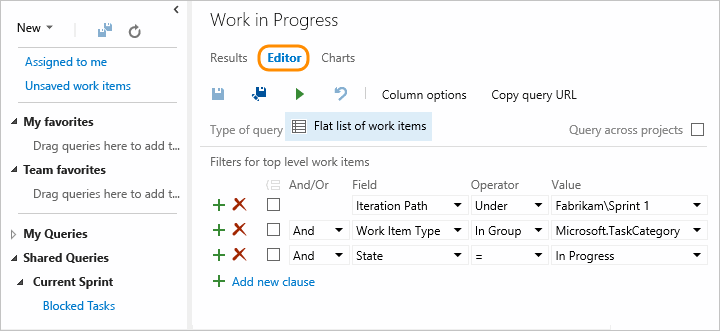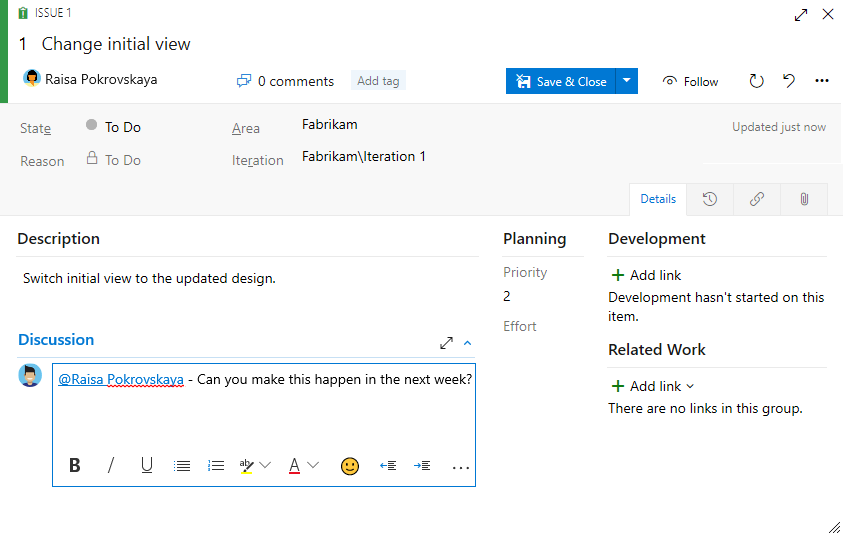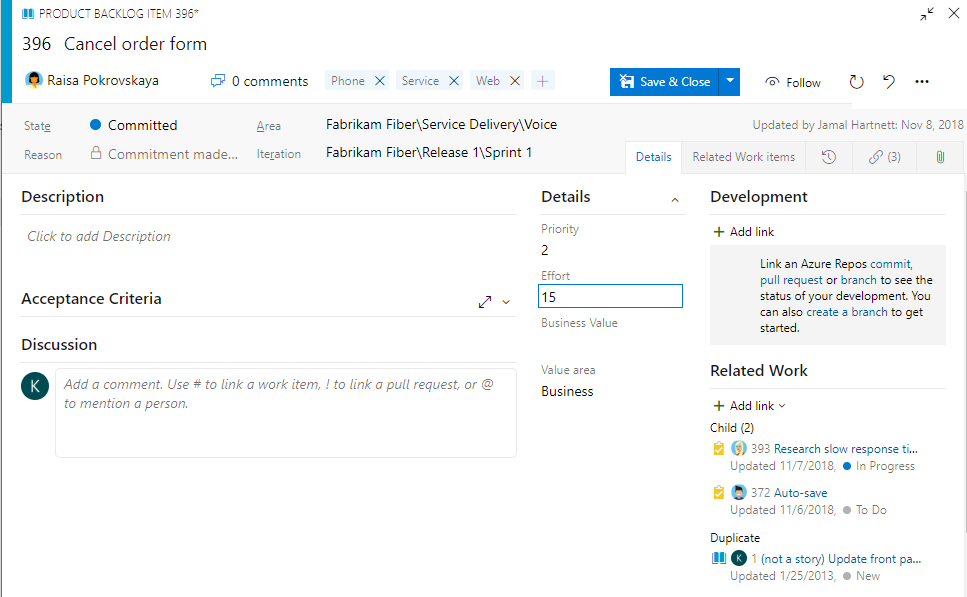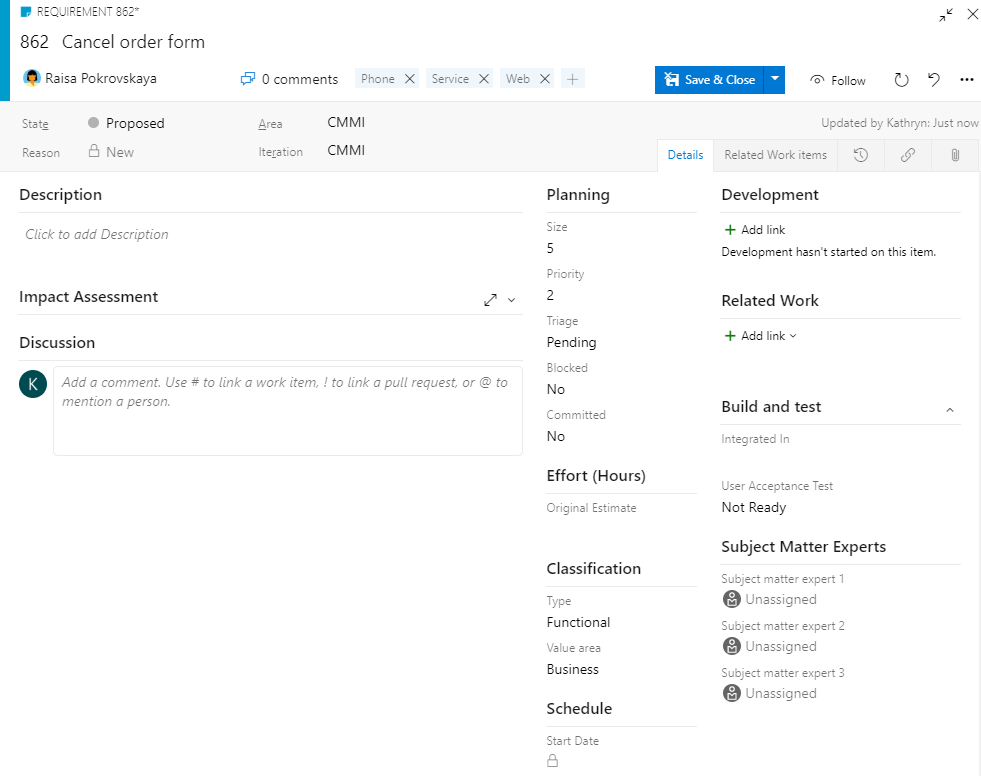Get started as a Stakeholder
TFS 2018
Stakeholders are users with free but limited access to Azure DevOps features and functions. With Stakeholder access, you can add and modify work items, view and approve pipelines, and view dashboards. You can check project status and provide direction, feedback, feature ideas, and business alignment to a team.
For more information, see the Stakeholder access quick reference and the feature matrix.
Prerequisites
Private project:
- You must have Stakeholder access and be a member of the Contributors or Project Administrators group. You can view boards, open and modify work items, and add child tasks to a checklist. But, you can't reorder or reparent a backlog item using drag-and-drop, nor update a field on a card.
Public project:
- You must have Stakeholder access and be a member of the Contributors or Project Administrators group to have full access to all Boards features. For more information, see Default roles and access for public projects.
To get access as a Stakeholder, ask your server administrator to add you to a security group that has Stakeholder access.
Sign in to a project
Select the link provided in your email invitation or open a browser window and enter the URL for the web portal.
http://ServerName:8080/tfs/DefaultCollection/ProjectNameFor example, to connect to the server named FabrikamPrime and project named Contoso, enterhttp://FabrikamPrime:8080/tfs/DefaultCollection/Contoso.Enter your credentials. If you can't sign in, ask the organization owner or Project Administrator to add you as a member of the project with Stakeholder access.
Understand work items and types
Work items support planning and tracking work. Each work item is based on a work item type and is assigned an identifier, which is unique within an organization or project collection.
Different work items are used to track different types of work, as described in About work items. The work item types available are based on the process used when your project was created—Agile, Basic, Scrum, or CMMI—as illustrated in the following images.
The following image shows the Agile process backlog work item hierarchy. User Stories and Tasks are used to track work, Bugs track code defects, and Epics and Features are used to group work under larger scenarios.

Each team can configure how they manage Bugs—at the same level as User Stories or Tasks—by configuring the Working with bugs setting. For more information about using these work item types, see Agile process.
Open your Kanban board
You can view work items once you connect to a project.
In your project select Work > Backlogs > Stories, and then select Board.

If you don't see Work, your screen size might be reduced. Select the three dots (
 ) icon. Then select Work > Backlogs > Board.
) icon. Then select Work > Backlogs > Board.
To select another team, open the project and team selector. Select a different team, or select the Browse option.
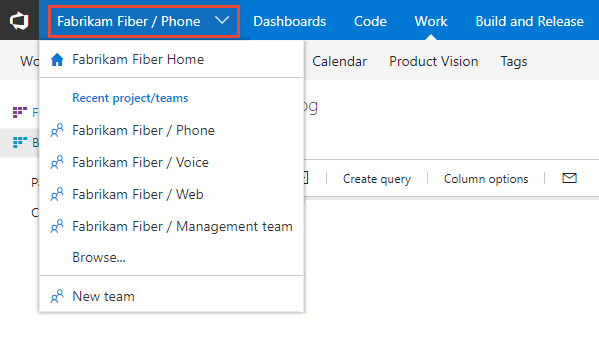
Your Kanban board displays.

Add work items
From the Kanban board, you can't add work items, but you can open them and annotate them. To add work items, open the backlog by choosing the Backlog link. Also, you can't update the status of a work item by drag-and-drop to a different column or reorder cards within a column.
For more information, see View and add work items from the Work Items page.
Add details
To open a work item, double-select the title or highlight it, and then select Enter. Here we show how to assign work. You can only assign work to a user who is added to the project.
For example, here we assign the story to Raisa Pokrovskaya and add a discussion note, at-mentioning Raisa. When you're done, select Save & Close.

Add more details by changing field values, adding a description or tags, and adding comments. For more information, see the following articles:
- Update fields: Descriptions and usage
- Add tags to work items. As a Stakeholder, you can add existing tags to a work item, but you can't add new tags
- Capture comments in the Discussion section
View as backlog
Check the product backlog to see how the team prioritized their work. Backlog items appear in priority order. Work item types might include bugs depending on the process used when your project was created.
From the Kanban board, select Backlog.

The list of backlog items displays in priority order. You can add a backlog item, which goes to the bottom of the list. With Stakeholder access, you can't reprioritize work.
Find work items
Select Work > Queries > Assigned to me. A list of work items assigned to you displays.
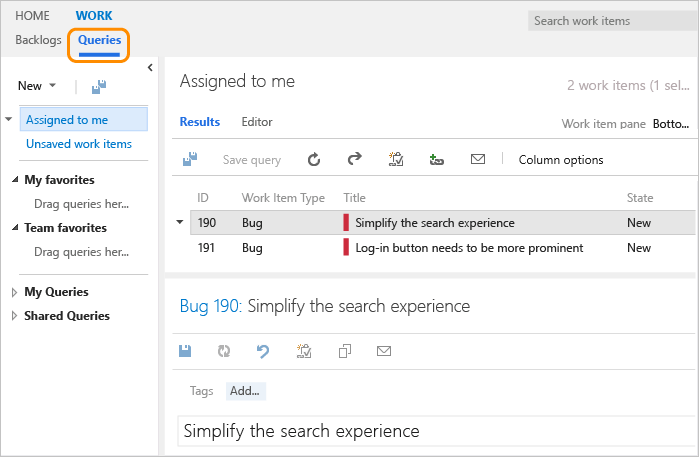
Or, open any of the queries defined in the Shared Queries folder.
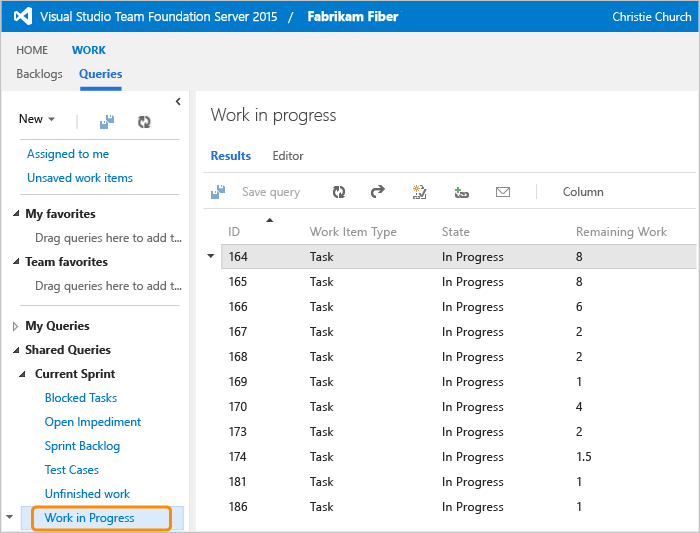
Create new queries or edit existing queries and save them under the My Queries folder.
